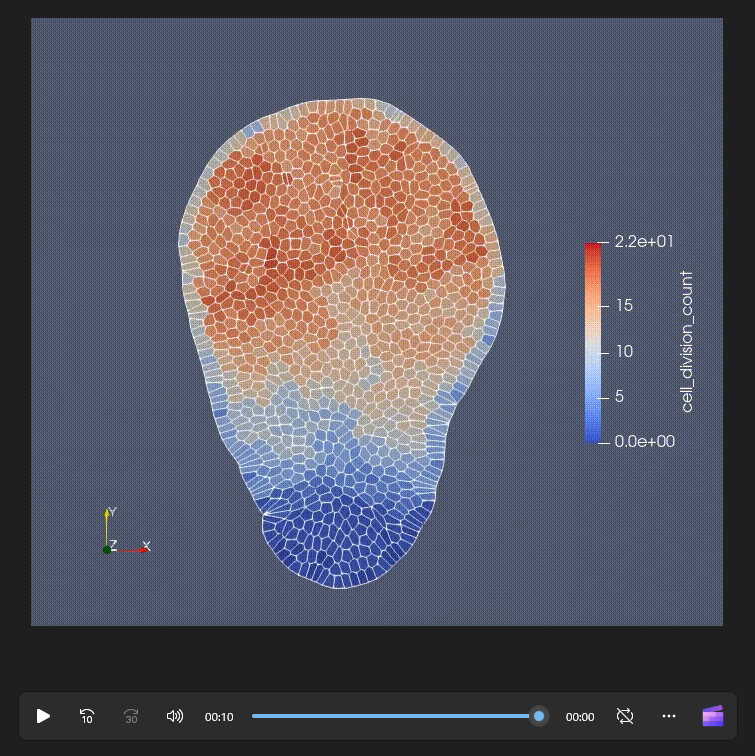DATE2022.12.12 #Press Releases
Is it a leaf or is it a petal?
According to new research, it depends on where a gene called AN3 is expressed.
December 12, 2022
With autumn in the northern hemisphere, the fall foliage paints nature’s canvas on par with spring flowers. In 1790, Johann Wolfgang von Goethe, a German poet/scientist fittingly claimed that flowers are modified leaves. But during plant development, what differentiates flower petals from leaves?
Using genetics and computer simulations, a new study reveals why flower organs, such as sepals and petals, and leaves differ in shape. The findings may help in designing better vegetable crop leaves and ornamental flowers. A team of scientists from the University of Tokyo and Kyoto University published the study in the latest issue of the journal Development.
If petals are modified leaves, what makes them look different? Earlier research showed that in young leaves of a well-researched plant, Arabidopsis thaliana, cells proliferate or multiply more at the base. But the cells in young petals proliferate more at the apex (Figure 1A). So, the team wanted to understand whether the difference in cell proliferation location causes the difference in shape. If so, which genes are responsible for it?
“The roots of this study come from some of our past studies. (1) We previously discovered that the AN3 (ANGUSTIFOLIA3) gene is the key to regulating leaf shape and size. We wanted to extend this knowledge to floral organs = modified leaves. (2) In the past, we felt that the local action of a plant growth hormone called auxin may influence leaf shape. To test this idea, we examined leaf shape after disturbing auxin action,” explains Hirokazu Tsukaya, a professor at the University of Tokyo and lead author of the research article.

Figure 1 : (A) Spatial pattern of cell proliferation differs in young organs. Grey dots indicate dividing cells. (B) Simulations show how the cell proliferation pattern affects the final shape of the organs. The red color indicates the active cell proliferation zone.
Auxin actively flows along the veins and margins of leaves and petals. To disturb the auxin action, the scientists treated the young leaves with an auxin transport inhibitor. They monitored cell division activity using chemicals that detect DNA replication. Disturbing auxin action changed the leaf shape which correlated with the angle at which the dividing cells separated from each other. The cell division angles also differed between sepals, petals, and leaves.
Then the team examined the accumulation of AN3 protein in the organs. They found that the spatial difference in the accumulation of AN3 protein correlates with the difference in cell division patterns within the leaves and floral organs. This implies that the AN3 gene could regulate spatial differences in cell proliferation in leaves and floral organs.
So, the difference in the shape of the organs could be due to any of the two reasons: the difference in the cell division angle or the spatial difference in cell proliferation zones.
But correlations do not guarantee causation. To understand the potential causation, Prof. Tsukaya’s group worked with a team from Kyoto University and created computer simulations. They simulated various positions and angles of cell division in young leaves, petals, and sepals (Figure 1B and Video 1). The simulation suggested that the difference in the spatial position of cell proliferation is the main factor affecting the final organ shape. The difference in cell division angle contributed less toward the shape difference.
Video 1 : An example simulation of cell proliferation in a petal. Polygons represent cells and lines represent cell walls. The color of each cell represents cell division count, and the red color means a higher rate of cell division.
The leaf shape can affect photosynthesis efficiency. The petal shape may affect pollination and the flower’s ornamental value. “In the field of applied biology, our finding that positional regulation of the cell proliferation area is the key to controlling organ shape will be a good basis for the ‘bio-design’ of organ shape,” says Prof. Tsukaya. “In the case of ornamental flowers, such knowledge applies to artificially designed flower forms. For vegetable species, it may help design better leaf shapes.”
Publication details
Journal Development Title Position of meristems and the angles of the cell division plane regulate the uniqueness of lateral organ shapeAuthors Ayaka Kinoshita*, Makiko Naito*, Zining Wang*, Yasuhiro Inoue, Atsushi Mochizuki, and Hirokazu Tsukaya
*Contributed equally to this workDOI
Podcast credits
Music: "Upbeat Forever" Kevin MacLeod (incompetech.com)
Podcast host: Dr. Ravindra Palavalli-Nettimi




